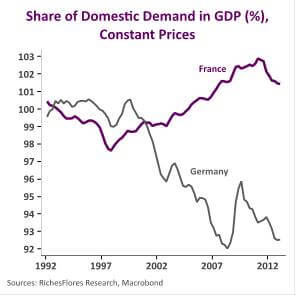The three reasons we do not see QE ending
Statements by Ben Bernanke and the release of minutes from the most recent FOMC meeting have erased any doubt sparked by the Fed’s September 18 change in communication, reinforcing expectations that asset purchases will be tapered. Most observers now think the tapering will come in March. We remain wary of the consensus for three main reasons. The first is our view of current U.S. economic trends, which we do not see improving enough to meet the Fed’s stated targets for growth or inflation in the coming months. The second is the inevitable effect that QE tapering would have on long-term interest rates, which the economy is still too weak to withstand.
How long will the last of Frankfurt’s safeguards hold?
The writing was on the wall: the ECB would have to do more as the hour of the Fed’s QE tapering approached. Here we are. Whether or not the Fed goes through with it – our previous article showed that we do not think it will – expectations of a reduction in asset purchases are already having a huge effect on markets and capital allocation around the world. By drying up the market for Treasury bonds, the Fed has been diverting capital flows from U.S. markets into numerous other assets for more than a year now, most notably into emerging and euro zone sovereign bonds. By tapering its QE, the Fed would restore the U.S. market to its rightful place, thus creating the conditions for investments to flow back into the U.S. Emerging markets and euro zone sovereign markets are thus particularly vulnerable to any change in the direction of Fed monetary policy.

